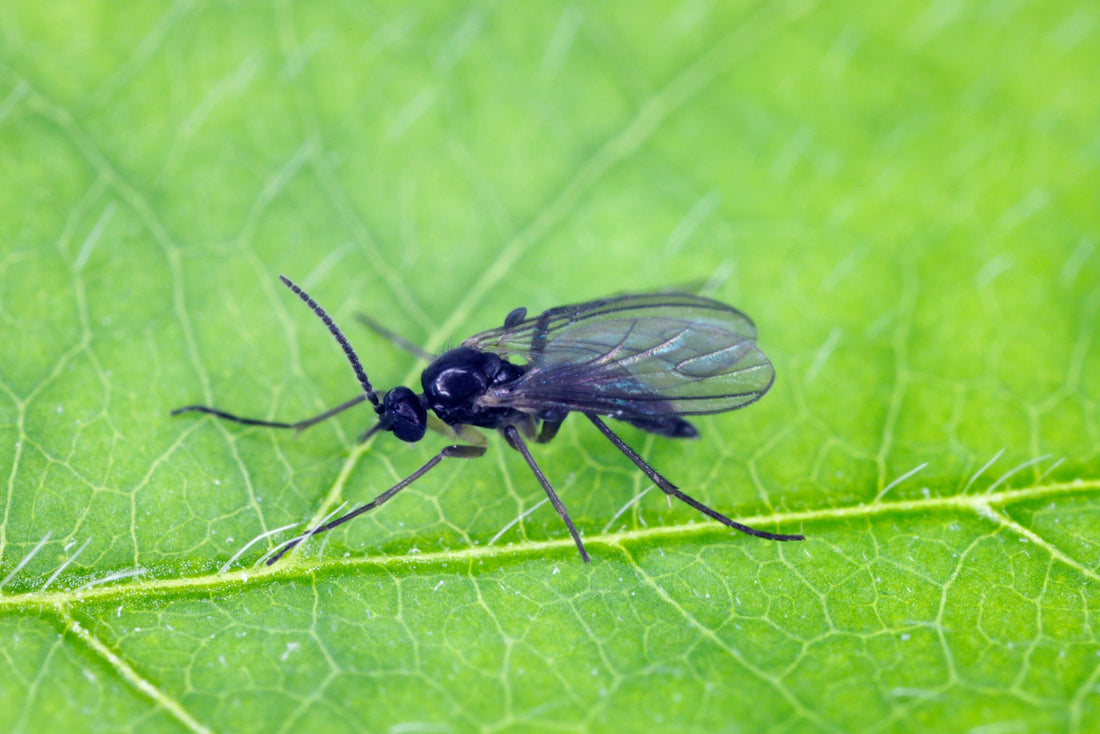Profile & Combat
Who is this?
Dung gnats often stay in pairs and crawl on the composter. If they fly, then to the window.
Tip for checking: put an A4 sheet of paper on the lid of the composter, the dung gnats like to crawl under there (and you can wipe them away right away).
Dung gnats can easily be mistaken for fungus gnats. But that is not a problem, because the measures described here also help against them. Fungus gnats are a bit more delicate and fly around more scattered.
Dung midges, like worms, live in the litter layer in the forest and help to break down organic material. They are part of the natural system and do not harm the composter. Of course, they are uncomfortable in large numbers, especially if the worm composter is indoors.
Cause: An invasion of dung flies indicates that your composter is out of balance. One reason could be, for example, excessive humidity.


Measures against dung flies
First Aid - fix the cause
Use our checklist to ensure that all items have adequate moisture and that worms are able to migrate freely. If necessary, regulate the humidity in the elements with the measures described in the checklist.
Minerals such as stone flour (available in garden stores) or our Mineral Mix (link product Mineral Mix ) also balance the compost climate. Mix a handful into each tier or dust over the surface, especially around the edges.
Take a feeding break of about 2 weeks, that helps in many cases.
--> With these tools, the dung fly population is often reduced to a tolerable level. If possible, put the composter outside until then (1-2 weeks).

Biological means of combating a dung fly invasion
Predatory mites ( Hypoaspis Miles ) and Solbac ( Bacillus thuringiensis israelensis )) have proven to be worm-friendly agents for quickly getting rid of dung midges completely; you can use them individually or in combination.
- With a bit of luck, predatory mites that eat the larvae can also settle in your composter in the long term.
- Solbac also has an effect against dung flies. You can also get it at garden centers.
Predatory mites & Solbac application: Distribute directly onto the soil (i.e. not onto the fresh waste) on all tiers, especially at the edges. Take a feeding break of about 2 weeks. Solbac has to be dissolved in water, if your composter is already too wet anyway, you can make it more concentrated than given in the instructions. Repeat the application of Solbac after two weeks.

Keep the dung flies under control
Check the moisture regularly afterwards and sprinkle minerals on the fresh waste from time to time.

